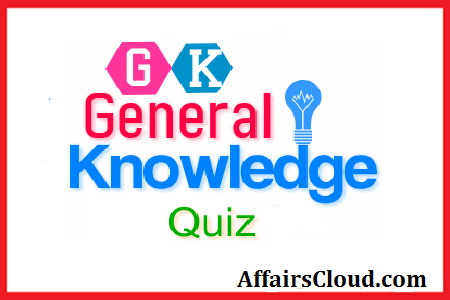Hello Aspirants. Welcome to Online General Knowledge section in Affairs cloud, which is important for all the competitive exams. We have created Some questions related to Indian GK(Indian Polity) !!!
- The electorate is named ……………………
1.Gram Sabha
2.Rajya Sabha
3.Lok Sabha
4.All of these
5.None of theseAnswer –1.Gram Sabha
Explanation :
The Panchayat is the Executive Committee of Gram Sabha. It is called by different names in different areas, e.g. it is named Panchayat in Andhra Pradesh, Tamil Naidu, Maharashtra and Rajasthan, the Gram Panchayat (GP) in Punjab, Bihar, Karnataka, Madhya Pradesh and the Gaon Panchayat in Assam, Gujarat, Uttar Pradesh - The Panchayati Raj was introduced for the first time in which year ?
1.1953
2.1959
3.1952
4.1960
5.None of theseAnswer – 2.1959
Explanation :
The Panchayat Raj system was first adopted by the state of Rajsthan in Nagaur district on 2nd
Oct 1959 - Who among the following has been nominated to be the common chairman of all the Zonal Councils ?
1.Chief Minister of the state
2.Supreme Court Judge
3.Finance Minister
4.Union Home Minister
5.None of theseAnswer – 4.Union Home Minister
Explanation :
Zonal Councils have been established by the State Reorganisation Act, 1956 .Union Home Minister has been nominated to be the common chairman of all the Zonal Councils - National Development Council (NDC) is a …………………….
1.Constitutional body
2.Non- Constitutional body
3.Organised body
4.Unorganised body
5.None of theseAnswer – 2.Non- Constitutional body
Explanation :
The National Development Council (NDC) was established in August 1952 by an executive resolution of the Government of India on the recommendation of the first five year plan. Like the Planning Commission, it is neither a constitutional body nor a statutory body. - ………………… recommended the constitution of a permanent Inter-state Counci for co-ordination among state and with the union.
1.Rajmannar Commission
2.Anandpur Sahib Resolution
3.Sarkaria Commission
4.Punchi Commission
5.None of theseAnswer – 3.Sarkaria Commission
Explanation :
Sarkaria Commission recommended the constitution of a permanent Inter-state Counci for co-ordination among state and with the union. - In which year Inter-State Council was constituted under Art 263?
1.1990
2.1982
3.1993
4.1978
5.None of theseAnswer – 1.1990
Explanation :
The Inter-State Council was established under Article 263 of the Constitution of India through a Presidential Order dated 28 May 1990. - A judge of the High court can hold office until the age of ……………….
1.65 years
2.62 years
3.60 years
4.55 years
5.None of theseAnswer – 2.62 years
Explanation :
A judge of the High court can hold office until the age of 62 years
A judge of the Supreme court can hold office until the age of 65 years - Jurisdiction of the supreme court has ………………………….. fold
1.One
2.Two
3.Three
4.Four
5.None of theseAnswer – 3.Three
Explanation :
Original, Appellate & Advisory The jurisdiction of the Supreme Court is three-fold, namely ,
(a) Original jurisdiction – Article 131 of the Constitution of India deals with the original jurisdiction of the Supreme Court of India ;
(b) Appellate jurisdiction – The appellate jurisdiction of the Supreme Court of India is provided by the Articles 132, 133, 134,136 and 138 of the Constitution of India ; and
(c) Advisory jurisdiction – Advisory jurisdiction of the Supreme Court of India is provided by the Article 143 of the Constitution of India . - Part IX A gives a constitutional foundation to the local self government units in ……………….
1.Municipal Corporation
2.Municipal Council
3.Local area
4.Urban area
5.None of theseAnswer – 4.Urban area
Explanation :
PART IXA which has come into force on 1-6-1993 gives a constitutional foundation to the local self-government units in urban areas. - The community development programme was launched in …………….
1.1952
2.1965
3.1970
4.1985
5.None of theseAnswer – 1.1952
Explanation :
The community development programme was launched on a pilot basis in 1952 to provide for a substantial increase in the country’s agricultural programme, and for improvements in systems of communication, in rural health and hygiene, and in rural education and also to initiate and direct a process of integrated culture change aimed at transforming the social and economic life of villagers.
AffairsCloud Recommends Oliveboard Mock Test
AffairsCloud Ebook - Support Us to Grow
Govt Jobs by Category
Bank Jobs Notification



